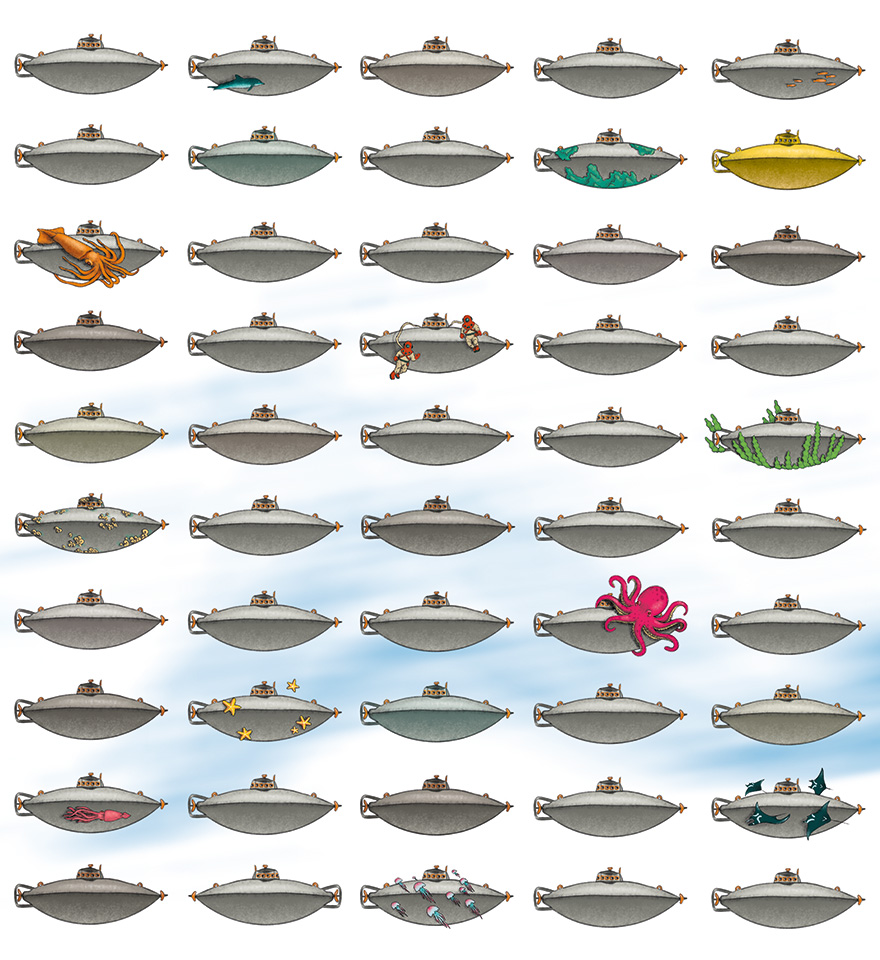DrzewieckiStefan
July 26, 1843 (possibly 1844), Kunka, Russian Empire (now Vinnytsia Region, Ukraine) —
April 23, 1938, Paris, France
Submarine
The first submarines, which not only went under the water but also moved in the right direction, did so thanks to the muscular strength of the passengers themselves. First with the help of oars. Later models were equipped with propellers. Engineers began to actively use the advantages of the worm gear. Passengers either rotated the handles or pedaled like on a bicycle.

Stefan Drzewiecki was the person who designed that single-person submarine.
During the Russo-Turkish War, according to Drzewiecki’s plan, the submarine could be used to undermine enemy ships. To do this, the person in the submarine had to put his or her hand in the sleeve protruding beyond the hull, attach a mine with an electric wire attached to it to the bottom of the ship, move to a safe distance, and detonate it.
During five months in1878, the submarine was undergoing testing in the Odesa water area, even one test explosion was carried out. However, the war came to an end, and it was no longer possible to test the boat in combat conditions.
Over the next year, Drzewiecki worked on a new submarine — an underwater mine tree-seat vessel. It was equipped with two propellers and two naval mines. The sleeves were not present in this version of the design. The mines were placed in copper bowls on the surface of the submarine. The bowls were behind closed lids supported by hinges and could be easily opened from the inside. Rubber pads filled with compressed air were attached to the mines on both sides. The pillows caused the mines to float up to the surface or under the bottom of the enemy ship. The explosion took place when the submarine reached a safe distance. The maximum speed the submarine could reach underwater was 3 knots.
Drzewiecki demonstrated the constructed underwater mine vessel and its potential to Emperor Alexander II on the Silver Lake in Gatchina, near St. Petersburg. As a result, he received the world’s first order for mass production of submarines.
Fifty submarines of a slightly modified design were produced at Nevsky Zavod and other plants during 1880-1881.
Sixteen submarines remained in Kronstadt in the Baltic Sea, and thirty-two were sent by rail to Odesa to distribute between the Black Sea ports, one was left for the engineering department and one was transferred to Drzewiecki for improvement. In 185, Drzewiecki turned this submarine intothe world’s first submarine with electric battery-powered propulsion.It reached a top speed of 4 knots.
Stefan Drzewiecki was born in Podillia, in the village of Kunka, which belonged to his father, a wealthy Polish officer Karol Nałęcz-Drzewiecki and his wife Hortensja.
The family owned plenty of land plots and real estate in Volyn, Warsaw, St. Petersburg and Paris, as well as a luxury estate in Odesa on the Black Sea coast. Stefan Drzewiecki lived in that house working on the design of submarines.
During his studies at École Nationale Supérieure d’Arts et Métiersin Paris Drzewiecki met Gustave Eiffel, for whom this institution was also an alma mater. They maintained friendly relations most of their lives, and when Drzewiecki moved to Paris, they even started a collaboration.
Although the Marine Technical Committee did not adopt this submarine for use of the fleet, there was no stopping the mass transition to a new type of engine.
Underwater mine vessel of mass production

Size: length — 6 meters, width — 1,2 meters, height — 1,7 meters
Displacement: 5,8 tons
Speed: 0,5 knots on the surface and 2,5 underwater
Maximum cruising range: 175 miles on the surface and 25 miles underwater
Permissible operating depth: 8 meters
Permissible diving depth: 12,5 meters
Crew: 3 people